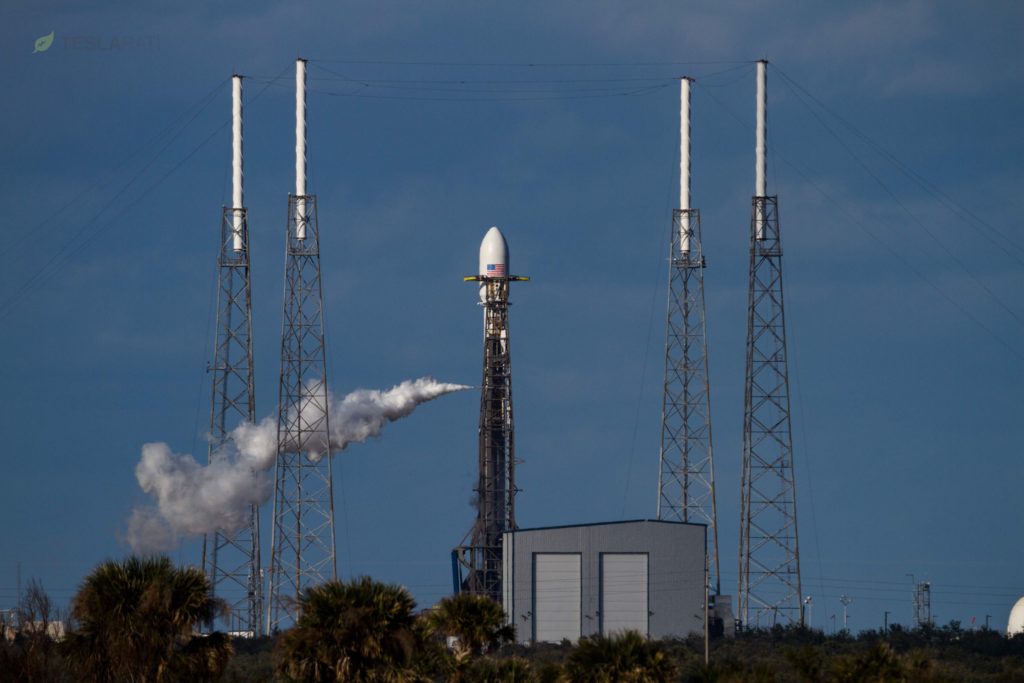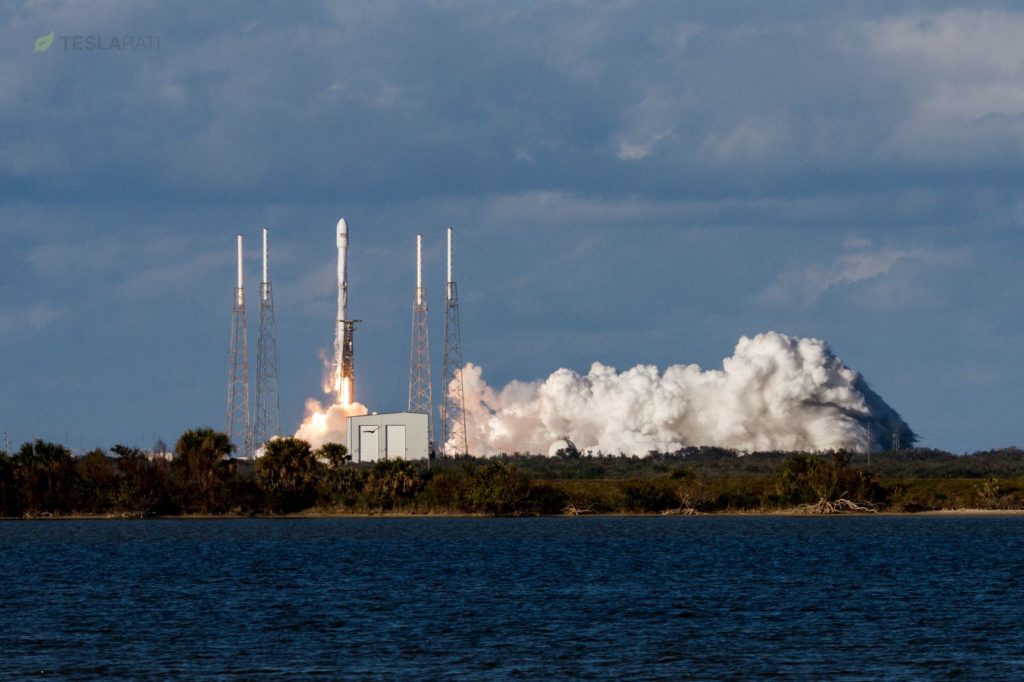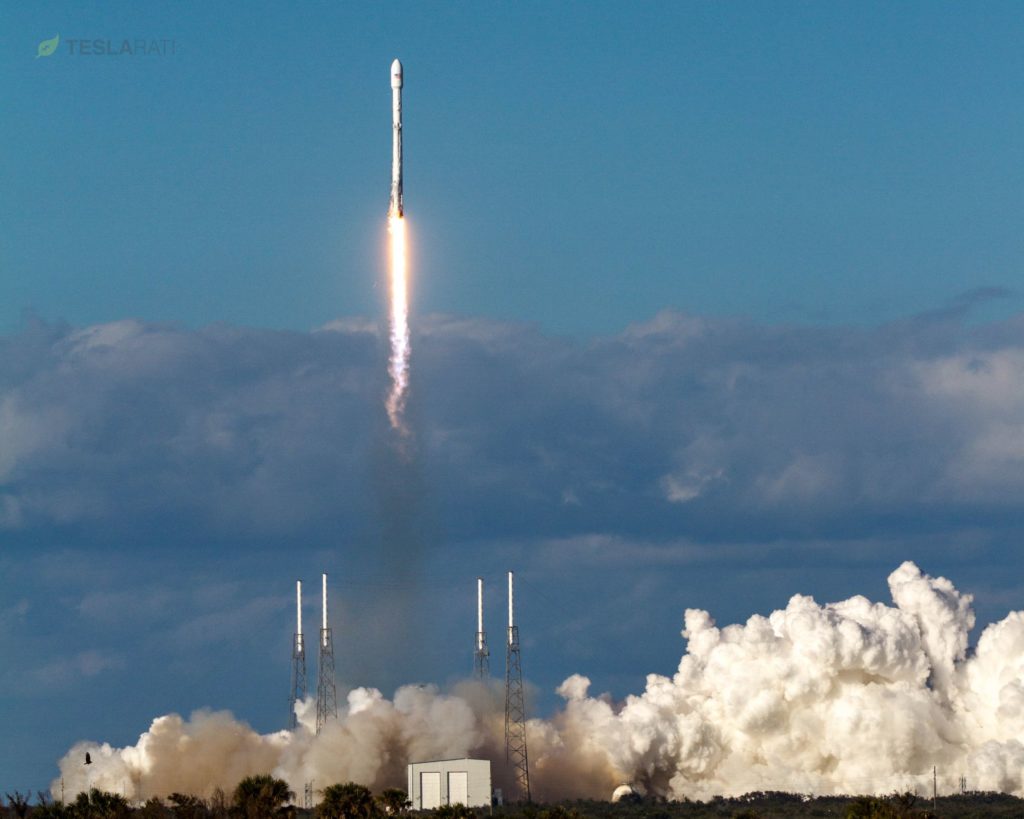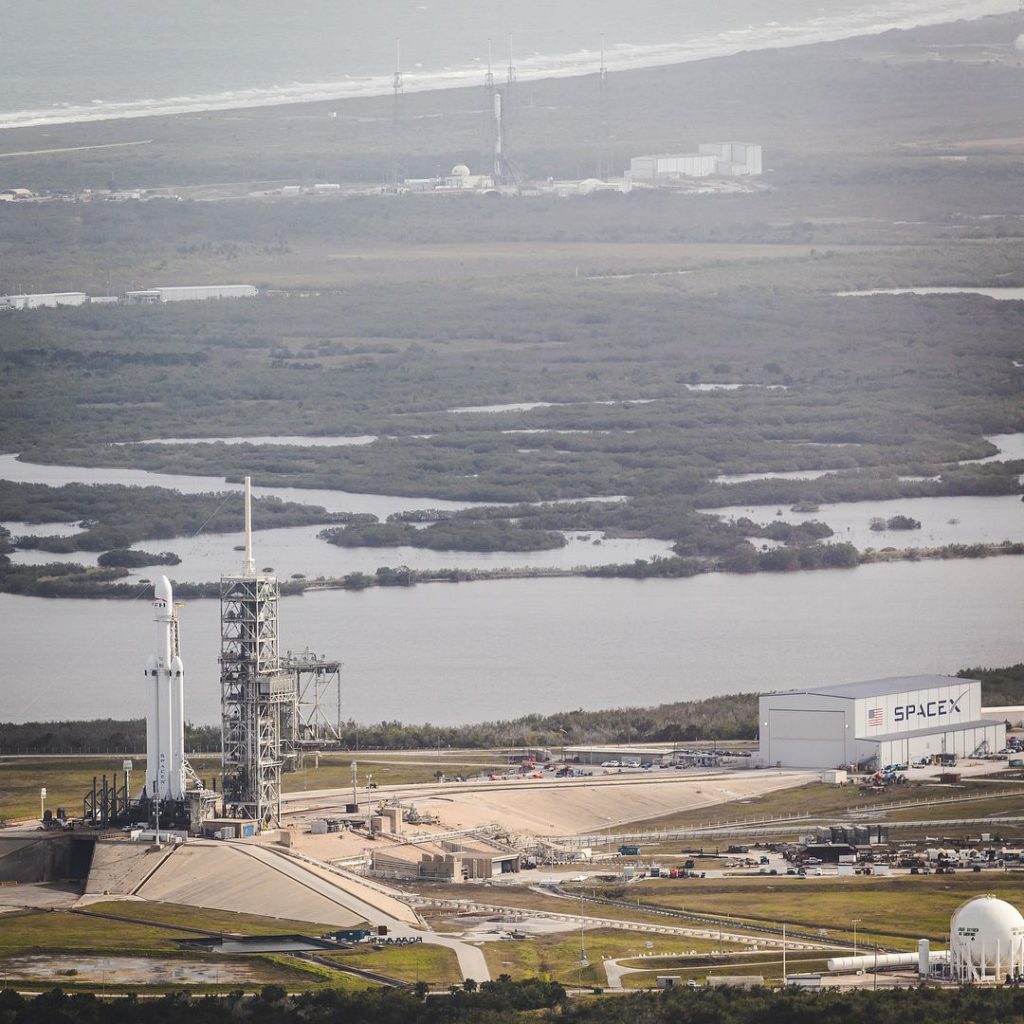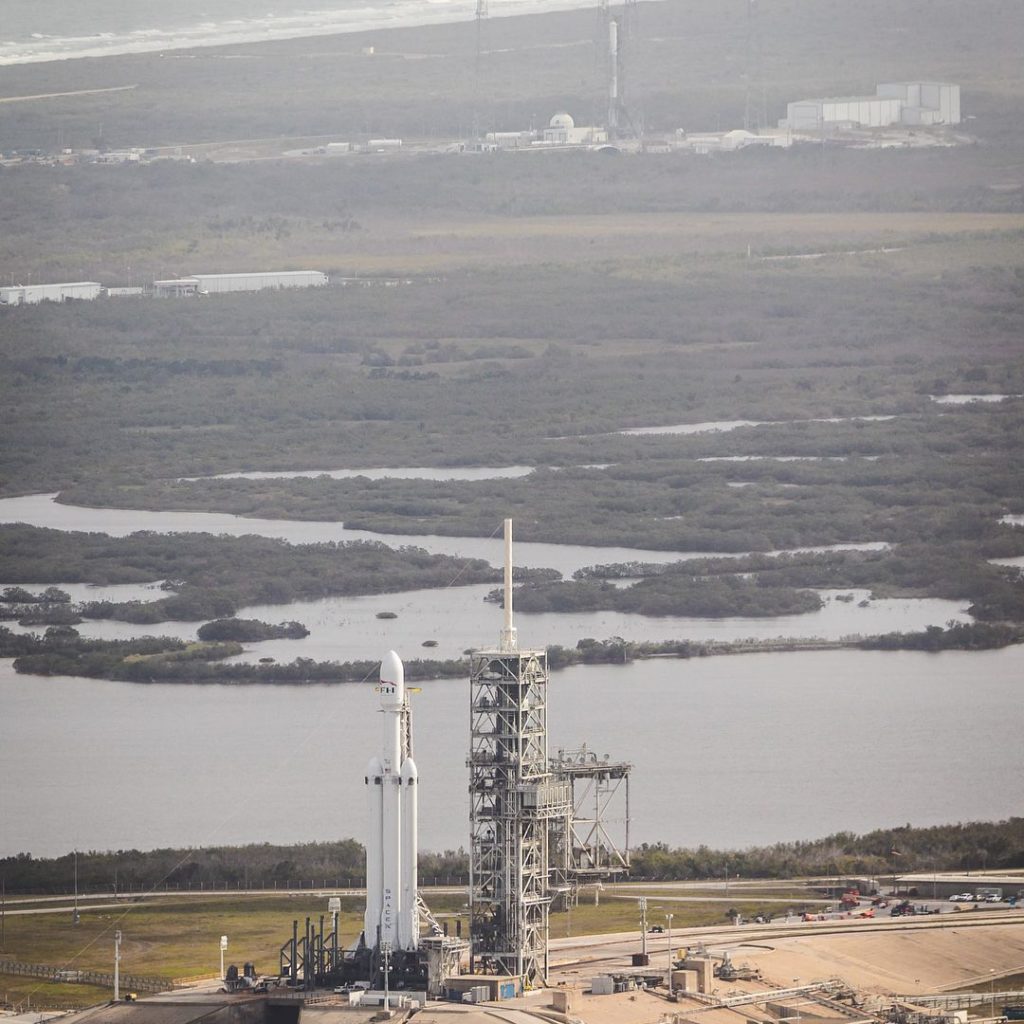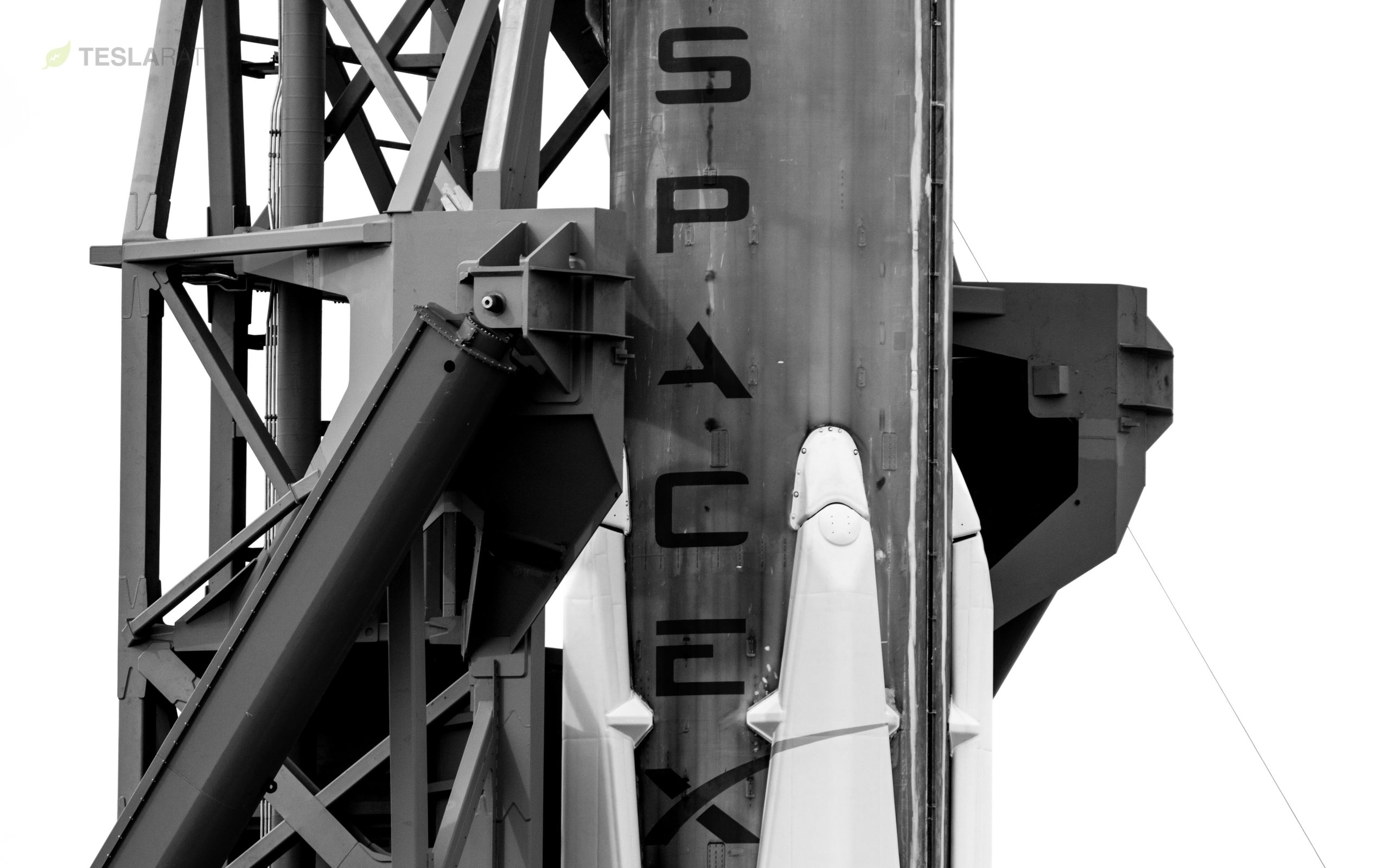
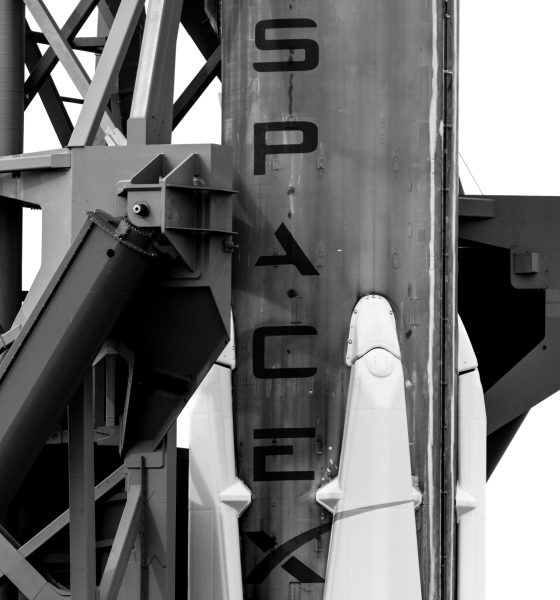
News
SpaceX nails reused booster launch, Falcon Heavy’s maiden flight days away
Despite a brief 24-hour delay due to weather and minor mechanical issues, SpaceX recycled the launch opportunity and completed the mission on Wednesday afternoon, January 31. Tasked with carrying GovSat-1 to orbit, the reused Falcon 9 rocket (Booster 1032) performed flawlessly and as expected, although the stage was expended. Launch directors confirmed just before the end of the live webcast that the communications satellite, a public-private partnership between SES and Luxembourg, was placed into a good orbit a few minutes before it separated from Falcon 9’s second stage. The mission marks SpaceX’s second successful launch of 2018, its first reused flight of the year, and the last launch before Falcon Heavy’s inaugural flight – currently scheduled for Tuesday, February 6.
Perhaps most intriguingly (or at least uniquely), the to-be-expended booster was still seen outfitted with both grid fins and landing legs at the launch pad, the new legs a stark white against the dark and sooty backdrop of the Falcon 9’s recycled booster. While SpaceX’s webcast host very explicitly stated at least three times that the first stage was not going to be recovered, careful listeners may have still caught snippets of the launch and recovery directors announcing different milestones as Falcon 9 S1 landed softly in the Atlantic Ocean. Similar to the recovery operations after the launch of Iridium-4 in December 2018, S1 flew as if it were landing aboard a drone ship, although in the case of this launch that theatricality extended even to landing legs.
- Falcon 9 venting before liftoff. (Tom Cross)
- We have liftoff! (Tom Cross)
- (Tom Cross)
While it may seem quite odd that SpaceX would choose to expend an entire, recoverable rocket, it is presumed that SpaceX is simply choosing to rid itself of a stock of older boosters incapable of flying more than once or twice – preparing for the introduction of the highly reusable Block 5 of Falcon 9, in other words. As stated by the webcast host, a SpaceX engineer, the company’s goal is for boosters to last “tens of launches in the short term, and hundreds or thousands of launches in the long term.” It is worth remembering that expending rocket boosters in the ocean (or even over land for Russia and China) is the status quo of all non-SpaceX rockets, and SpaceX has only just begun to perfect booster recovery and reuse – the first successful ocean recovery was completed less than two years ago. The very fact that it already feels odd or even wrong to “throw away” hardware into the ocean after launch is a testament to just how rapidly SpaceX have changed both the figurative and literal paradigms of orbital rocketry, and it is only a matter of time before the eminently persistent company ends the practice of expendable launches internally, if not globally.
Up next, Falcon Heavy
After yet another successful mission for SpaceX, the company’s Florida efforts will now briefly focus on the imminent inaugural launch of Falcon Heavy, the company’s newest and largest rocket. Loosely penciled in for liftoff on Tuesday, February 6, the massive vehicle will become the most powerful and capable operational rocket in the world, comparable only to the likes of NASA’s Saturn V and Space Shuttle, as well as the Soviet Union’s short-lived Energia. Regardless of its place against a historical backdrop of massive state-funded rockets, Falcon Heavy will by default become the most powerful commercial launch vehicle ever developed, and that title will almost certainly remain uncontested until 2020 at the absolute earliest. If or when the first and smallest version of NASA’s SLS rocket launches, likely also no earlier than 2020, the space agency may well take the crown back for a brief year or so. Regardless, SpaceX will likely be regularly launching Falcon Heavies and nearing the tail end of the development and testing of its much larger BFR rocket and spaceship.
Falcon Heavy will be the clearest progress yet towards such a massive rocket, and will provide SpaceX with invaluable experience and expertise as the only private company to ever operate a super heavy-lift launch vehicle (SHLLV). After a solid four weeks of near-constant testing, bug-fixing, and retesting, Falcon Heavy just days ago completed its first static fire, marking the first point in its history that all 27 of its first stage engines were simultaneously ignited. The data produced by that crucial test was apparently satisfactory, and Elon Musk just yesterday reiterated that the vehicle’s first launch was still targeting February 6.
- Paper rocket, meet the real deal. (SpaceX)
- Falcon Heavy and Falcon 9 in the distance, a tour de force of SpaceX’s breadth of accomplishment. (SpaceX)
Follow along live as launch photographer Tom Cross and your intrepid author cover these groundbreaking events live.
Teslarati – Instagram – Twitter
Tom Cross – Instagram
Eric Ralph – Twitter

News
Ford cancels all-electric F-150 Lightning, announces $19.5 billion in charges
“Rather than spending billions more on large EVs that now have no path to profitability, we are allocating that money into higher returning areas, more trucks and van hybrids, extended range electric vehicles, affordable EVs, and entirely new opportunities like energy storage.”
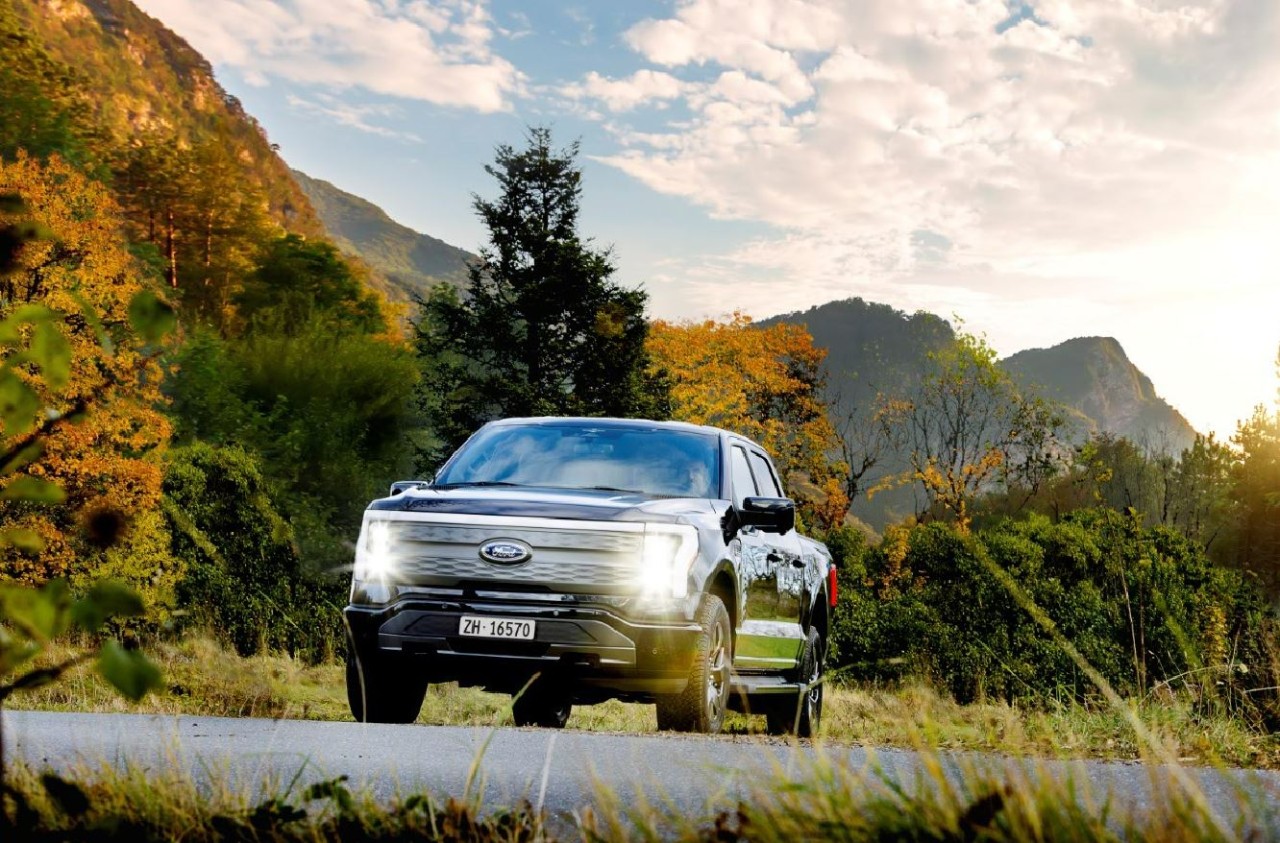
Ford is canceling the all-electric F-150 Lightning and also announced it would take a $19.5 billion charge as it aims to quickly restructure its strategy regarding electrification efforts, a massive blow for the Detroit-based company that was once one of the most gung-ho on transitioning to EVs.
The announcement comes as the writing on the wall seemed to get bolder and more identifiable. Ford was bleeding money in EVs and, although it had a lot of success with the all-electric Lightning, it is aiming to push its efforts elsewhere.
It will also restructure its entire strategy on EVs, and the Lightning is not the only vehicle getting the boot. The T3 pickup, a long-awaited vehicle that was developed in part of a skunkworks program, is also no longer in the company’s plans.
Instead of continuing on with its large EVs, it will now shift its focus to hybrids and “extended-range EVs,” which will have an onboard gasoline engine to increase traveling distance, according to the Wall Street Journal.
“Ford no longer plans to produce select larger electric vehicles where the business case has eroded due to lower-than-expected demand, high costs, and regulatory changes,” the company said in a statement.
🚨 Ford has announced it is discontinuing production of the F-150 Lightning, as it plans to report a charge of $19.5 billion in special items.
The Lightning will still be produced, but instead with a gas generator that will give it over 700 miles of range.
“Ford no longer… pic.twitter.com/ZttZ66SDHL
— TESLARATI (@Teslarati) December 15, 2025
While unfortunate, especially because the Lightning was a fantastic electric truck, Ford is ultimately a business, and a business needs to make money.
Ford has lost $13 billion on its EV business since 2023, and company executives are more than aware that they gave it plenty of time to flourish.
Andrew Frick, President of Ford, said:
“Rather than spending billions more on large EVs that now have no path to profitability, we are allocating that money into higher returning areas, more trucks and van hybrids, extended range electric vehicles, affordable EVs, and entirely new opportunities like energy storage.”
CEO Jim Farley also commented on the decision:
“Instead of plowing billions into the future knowing these large EVs will never make money, we are pivoting.”
Farley also said that the company now knows enough about the U.S. market “where we have a lot more certainty in this second inning.”
News
SpaceX shades airline for seeking contract with Amazon’s Starlink rival

SpaceX employees, including its CEO Elon Musk, shaded American Airlines on social media this past weekend due to the company’s reported talks with Amazon’s Starlink rival, Leo.
Starlink has been adopted by several airlines, including United Airlines, Qatar Airways, Hawaiian Airlines, WestJet, Air France, airBaltic, and others. It has gained notoriety as an extremely solid, dependable, and reliable option for airline travel, as traditional options frequently cause users to lose connection to the internet.
Many airlines have made the switch, while others continue to mull the options available to them. American Airlines is one of them.
A report from Bloomberg indicates the airline is thinking of going with a Starlink rival owned by Amazon, called Leo. It was previously referred to as Project Kuiper.
American CEO Robert Isom said (via Bloomberg):
“While there’s Starlink, there are other low-Earth-orbit satellite opportunities that we can look at. We’re making sure that American is going to have what our customers need.”
Isom also said American has been in touch with Amazon about installing Leo on its aircraft, but he would not reveal the status of any discussions with the company.
The report caught the attention of Michael Nicolls, the Vice President of Starlink Engineering at SpaceX, who said:
“Only fly on airlines with good connectivity… and only one source of good connectivity at the moment…”
CEO Elon Musk replied to Nicolls by stating that American Airlines risks losing “a lot of customers if their connectivity solution fails.”
American Airlines will lose a lot of customers if their connectivity solution fails
— Elon Musk (@elonmusk) December 14, 2025
There are over 8,000 Starlink satellites in orbit currently, offering internet coverage in over 150 countries and territories globally. SpaceX expands its array of satellites nearly every week with launches from California and Florida, aiming to offer internet access to everyone across the globe.
Currently, the company is focusing on expanding into new markets, such as Africa and Asia.
News
Tesla Model Y Standard stuns in new range test, besting its Premium siblings
Tesla’s newer vehicles have continued to meet or exceed their EPA estimates. This is a drastic change, as every 2018-2023 model year Tesla that Edmunds assessed did not meet its range estimates.

The Tesla Model Y Standard stunned in a new range test performed by automotive media outlet Edmunds, besting all of its Premium siblings that are more expensive and more luxurious in terms of features.
Testing showed the Model Y Standard exceeded its EPA-estimated range rating of 321 miles, as Edmunds said it is the “longest-range Model Y that we’ve ever put on our loop.” In the past, some vehicles have come up short in comparison with EPA ranges; for example, the Model Y’s previous generation vehicle had an EPA-estimated range of 330 miles, but only drove 310.
Additionally, the Launch Series Model Y, the first configuration to be built in the “Juniper” program, landed perfectly on the EPA’s range estimates at 327 miles.
It was also more efficient than Premium offerings, as it utilized just 22.8 kWh to go 100 miles. The Launch Series used 26.8 kWh to travel the same distance.
It is tested using Edmunds’ traditional EV range testing procedure, which follows a strict route of 60 percent city and 40 percent highway driving. The average speed throughout the trip is 40 MPH, and the car is required to stay within 5 MPH of all posted speed limits.
Each car is also put in its most efficient drive setting, and the climate is kept on auto at 72 degrees.
“All of this most accurately represents the real-world driving that owners do day to day,” the publication says.
With this procedure, testing is as consistent as it can get. Of course, there are other factors, like temperature and traffic density. However, one thing is important to note: Tesla’s newer vehicles have continued to meet or exceed their EPA estimates. This is a drastic change, as every 2018-2023 model year Tesla that Edmunds assessed did not meet its range estimates.
Tesla Model Y Standard vs. Tesla Model Y Premium
Tesla’s two Model Y levels both offer a great option for whichever fits your budget. However, when you sit in both cars, you will notice distinct differences between them.
The Premium definitely has a more luxurious feel, while the Standard is stripped of many of the more premium features, like Vegan Leather Interior, acoustic-lined glass, and a better sound system.
You can read our full review of the Model Y Standard below:
Tesla Model Y Standard Full Review: Is it worth the lower price?
